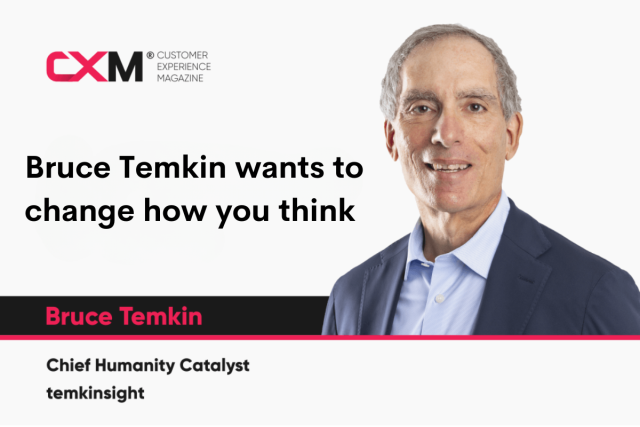September 22, 2025
Five9: Agentic AI Isn’t the Future of CX, It’s Already Here

AI in the contact centre has moved from hype to measurable outcomes. After years of experimentation and small-scale pilots, many organisations are now committing to enterprise-wide deployments.
Jonathan Rosenberg, Chief Technology Officer and Head of AI at Five9, believes the timing is no coincidence.
“It’s clear that the technology has approached a pivot point. Especially with generative AI, the technology has become really good. It’s now possible to get the kind of outcomes you want with a lower cost of implementation and faster time to value, even the more subtle things, like the quality of the voices. Historically, people were used to robotic AI, and it sounded terrible on the voice side. Now, sometimes it’s almost impossible to tell the difference,” he explained.
Rosenberg argues that demand is being fueled from the top. “Unless you’ve stuck your head in the sand, everyone is hearing about AI. Everyone is hearing about the drive to improve efficiency and reduce costs. Every CX leader, their boss, the CEO, the CIO, whoever it is, is saying, you’ve got to figure out a way to use AI to save money.”
The results are starting to prove the case. One global restaurant chain has already saved more than $1 million annually using Five9’s AI. “Those are the kind of real results that give them confidence to do more and go to the next use case, the next use case, and repeat it,” he said.
People Want to Feel Heard
The rise of AI inevitably raises questions about how much can—or should—be automated. Rosenberg sees the balance as dynamic.
“It depends on the vertical and the brand. The tipping point is really your customer satisfaction. You know you’ve gone too far when your customer satisfaction has gotten worse. If you see high transfer rates to agents, you’re trying too hard. If you see churn, you’re also trying too hard,” he said.
Klarna’s 100% automation experiment was a clear example of an AI-first push gone wrong. “It was a genius PR stunt. They got a lot of press, and they had to pull it back because they exactly saw these outcomes.”
Rosenberg believes a human-free contact centre is a flawed idea because it is missing one crucial element: emotions. “I think the idea of a human-free contact centre is nonsense. Emotion matters. If you’re really angry or if you need to be really convinced that some change was made, you want to talk to a person to get confidence, to build trust. Sometimes you just need someone to yell at and feel like you were heard. People don’t feel heard by a bot,” he said.
Barriers to Adoption
Even with proven ROI, some organisations remain hesitant to scale. Rosenberg attributes this to the industry’s conservative nature. “The contact centre as an industry has been relatively conservative. You’re the front door for your brand, and you want to be cautious,” he said.
To address lingering doubts, Five9 created an AI blueprint process that lets companies test the technology on their own data before making large-scale commitments. The idea is to give leaders a clear picture of potential outcomes upfront, easing the leap from pilot to production.
Trust is the deciding factor that determines whether companies move forward or stall in endless pilots. Both consumers and brands need confidence that AI agents are reliable and well-governed, and without that assurance, even the most advanced technology won’t be fully embraced.
“Consumers trusting the AI agents, brands trusting that the AI is doing its job; you have to build tooling and product capabilities that help understand how to trust it or not,” he said. “You have to see it to trust it.”
Agentic CX
The company has also introduced the term agentic CX to describe the next stage of customer engagement. At its core, Rosenberg said, it’s about creating self-service solutions that are more fluid and human-like.
“Agentic CX is, simply put, the usage of agentic technology for delivering improved customer experience. It’s about building much more flexible, self-service solutions that are not rigidly scripted but can act and flow with the conversation, much like a human agent would. That agentic customer experience not only makes it more human-like but, in many cases, superhuman-like. Some of the most compelling demos are things where a live agent wouldn’t have done it that fast.”
Into the future, Rosenberg sees rapid adoption of more advanced use cases. Much of the industry still relies on dated “press 1 for sales” IVR systems, and he believes generative AI will quickly replace them. “We’re going to start to do a much better job of containing the previously uncontainable in the self-service flows,” he said.
His long-term hope is that AI won’t just be tolerated, but preferred. “Today, people would still rather talk to a person than AI. If we’re successful in this in the next 12 to 18 months, people would prefer to talk to the AI than the human. Not for everything, of course, but if it’s truly faster and more effective, and efficient and available all the time, why not?”



